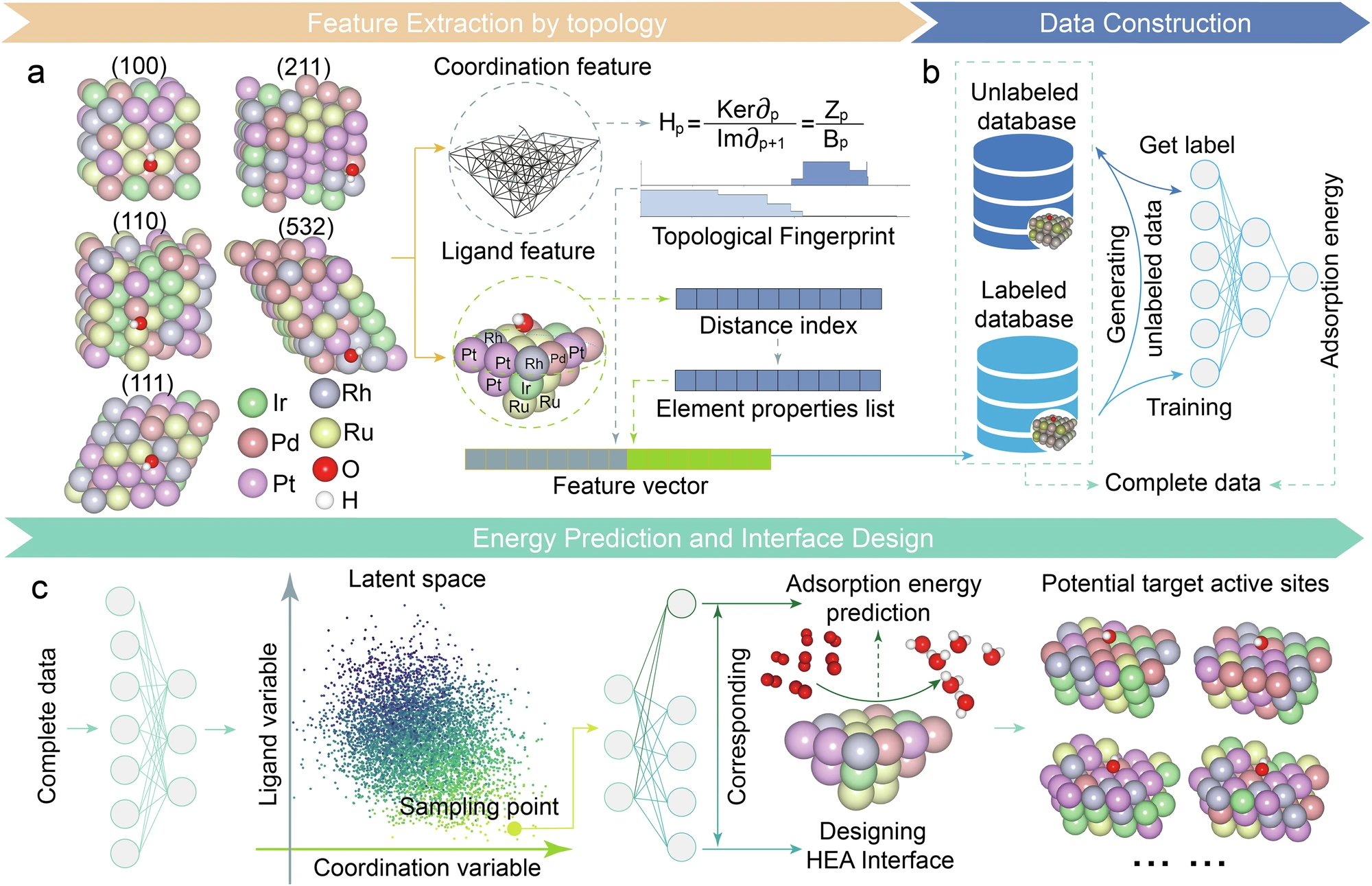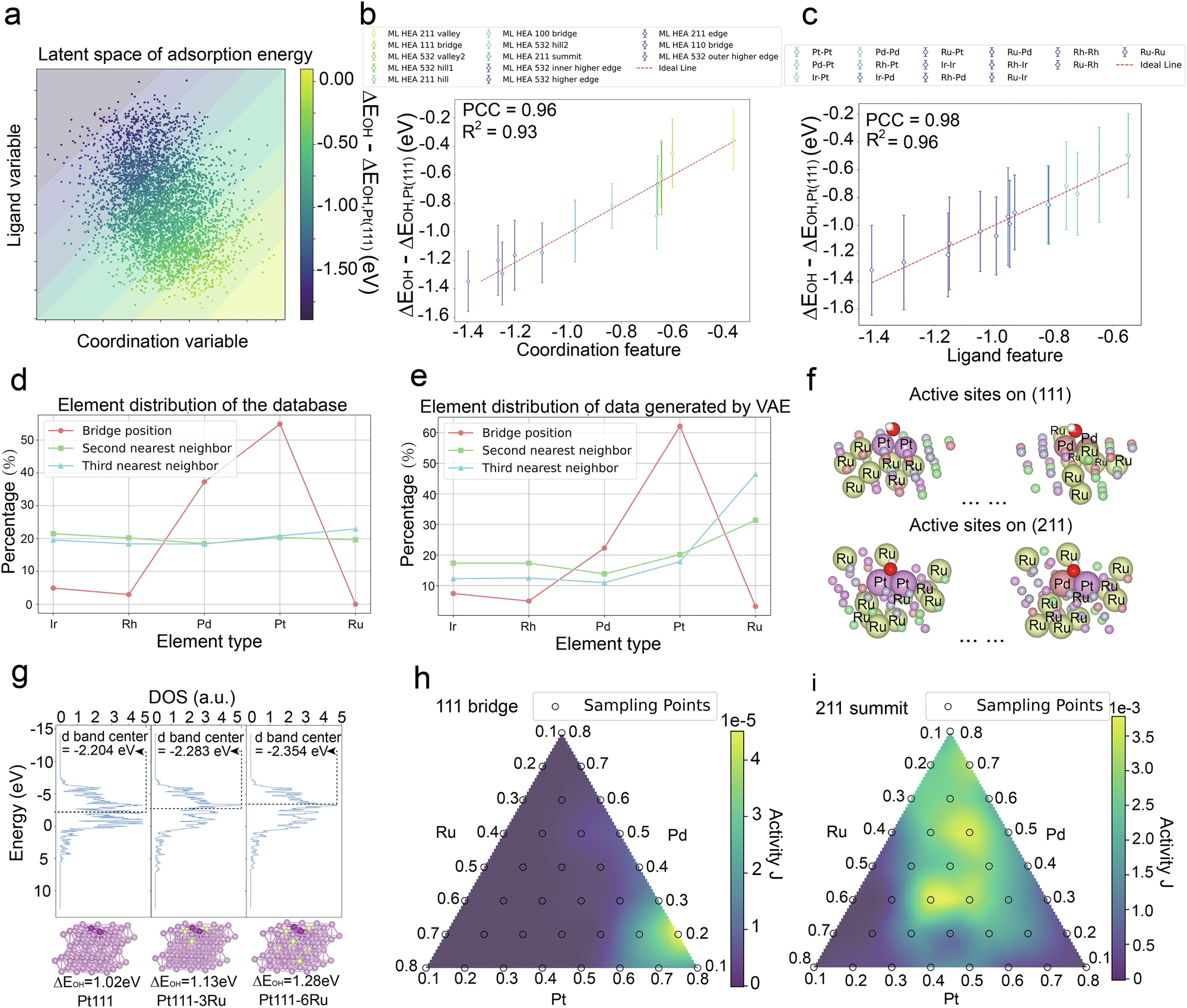Peking University, June 18, 2025: A collaborative research team led by Professor Pan Feng from the School of New Materials at Peking University Shenzhen Graduate School has developed a topology-based variational autoencoder framework (PGH-VAEs) to enable the interpretable inverse design of catalytic active sites. Their study, titled “Inverse design of catalytic active sites via interpretable topology-based deep generative models” and published in npj Computational Materials, introduces a novel integration of graph-theoretic structural chemistry, algebraic topology, and deep generative models, enabling the rational design of catalysts with targeted adsorption properties from performance objectives.
Background
Designing catalysts with precise active sites is crucial for enhancing efficiency in energy and chemical processes. Traditional forward-design methods, based on DFT and machine learning, struggle with complex systems, such as high-entropy alloys (HEAs), due to their limited interpretability and data constraints. Graph-based representations of atomic structures, paired with persistent GLMY homology (PGH), a topological tool for asymmetric graphs, provide a new approach to analyzing and generating catalytic structures.

PGH-VAEs Framework for Inverse Catalytic Site Design.
Why it matters
This interpretable inverse design framework provides a powerful alternative to trial-and-error methods in catalyst discovery. This work demonstrates that interpretable inverse design is no longer out of reach. By linking topological descriptors with physical performance metrics, the framework provides a transparent pathway from theoretical modeling to practical catalyst synthesis. Such breakthroughs are especially crucial for HEAs and other structurally complex catalysts where trial-and-error experimentation is costly and inefficient.
Key Findings
In this groundbreaking study, the researchers introduced a physically interpretable inverse design framework that combines graph-theoretic structural representations with topological analysis and deep generative modeling. Using persistent GLMY homology (PGH), they extracted topological invariants, such as atomic connectivity and structural voids, from complex catalytic configurations, enabling a deeper understanding of how local and long-range structural features influence catalytic performance. To capture these interactions, they designed a dual-channel representation system that separately encodes atomic coordination and distant elemental modulation effects. This data was then used to train a variational autoencoder (VAE) coupled with a gradient boosting regressor (GBRT), achieving highly accurate predictions of *OH adsorption energy, with a mean absolute error of just 0.045 eV, despite being trained on a relatively small dataset of around 1100 DFT samples.
Remarkably, the study uncovered a strong linear correlation between topological descriptors, particularly Betti numbers, and adsorption properties, providing rare physical insight into the structure–performance relationship. The model also successfully generated optimal active site structures in IrPdPtRhRu high-entropy alloys, identifying Pt/Pd as preferred bridge atoms and Ru as a distant regulator. Furthermore, it predicted ideal compositional ratios for different crystal surfaces, offering precise and actionable targets for experimental validation.

PGH Topology-Adsorption Correlation & Generated Structure Schematics.
Future Implications
This study sets a new benchmark for interpretable, data-driven materials design. Though focused on HEAs, the framework can be extended to other catalysts and materials for energy, environmental, and industrial applications, offering a scalable path to rational, AI-guided material discovery.
*This article is featured in PKU News "Why It Matters" series. More from this series.
Read more: https://www.nature.com/articles/s41524-025-01649-8
Written by: Akaash Babar
Edited by: Zhang Jiang
Source: PKU News (
Chinese)

